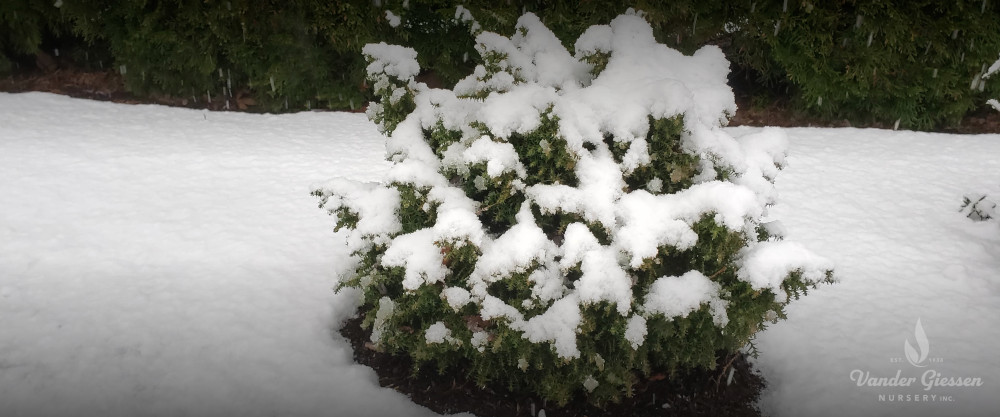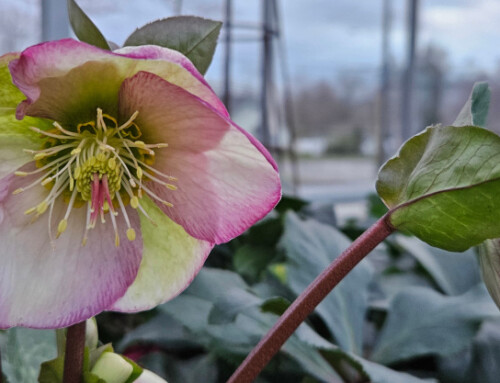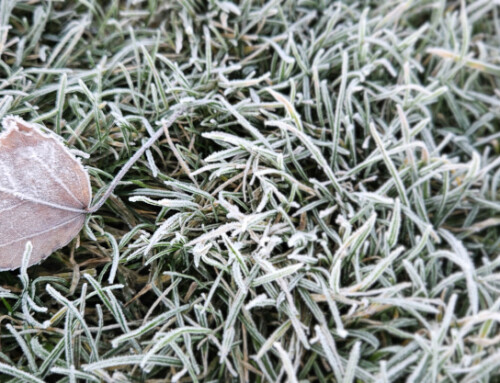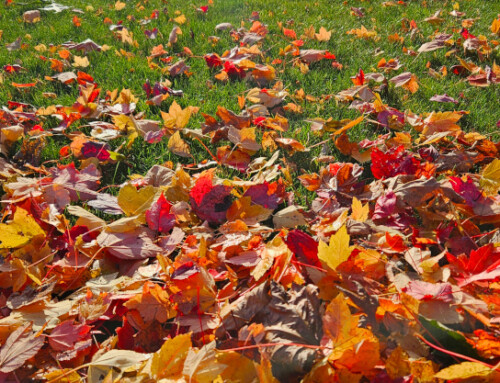Compared to the last couple of years, this winter has been pleasantly mild, and with seed catalogs arriving and bulbs beginning to sprout, you may—like me—have begun to dream of spring. As is typical for the Pacific Northwest, however, winter weather often arrives later in January or even February, and by the time you’re reading this, the bitter northeast wind may be whipping snowflakes past your windows. If you haven’t already, now is the time to give your plants some last-minute protection from the cold weather headed our way over the next couple of weeks. Spring isn’t far away—but first, winter.
In the last couple of months, I’ve written about spraying tender plants with an anti-transpirant like Wilt Stop to protect against winter damage, so if you’ve sprayed your plants, you’re already ahead of the game. If you haven’t, it’s likely already too late to spray for this go-around of winter weather, since the spray needs above-freezing weather and a sunny day to properly cure, a combination of which isn’t forecast anytime soon.
Particularly in northern and western Whatcom County, the primary cause of winter damage isn’t so much the cold, but rather the northeast wind that brings the cold temperatures, drying out the air—and plant foliage—in the process. To protect your plants against a northeaster, physical measures may be necessary.
One common and effective method to protect plants is by wrapping them. For this, you can get creative: old blankets, burlap, sheets of bubble wrap—you’re not looking to score points for good looks here, just to shield your plants from the worst of the cold and wind. Remember, though, to remove the protection as soon as the cold is past, since plants still need proper air circulation and exposure to normal conditions through winter to stay healthy. In the meantime, be sure to tie the blankets or burlap snugly around your plants—the last thing you want to see is grandma’s afghan fly past the window at ten o’clock at night when the wind is howling!
Next, you may have some perennials or smaller shrubs that don’t easily lend themselves to wrapping, and for these, I like to use an overturned shrub or tree pot to shield them. My hellebores are already budding for their early spring bloom, and rather than watch the buds wither in the northeaster, I’ve gathered the foliage into an upside-down pot and pinned the pot to the ground with large spikes or ground staples. As soon as the weather warms slightly, I’ll pull the pots off and the buds will be in great shape for spring.
Finally, be sure you’ve properly protected your roses. At the time of this writing, there are single-digit overnight lows in the forecast, and if they’re accompanied (or precipitated) by northeast winds, grafted plants like many roses grown today are at risk of freeze damage. To protect your roses, simply make a pile of bark mulch around the base of each of your plants, covering the knobby graft from which all the branches sprout. Be sure to cover the graft with at least a couple inches of bark to properly insulate it from cold, and once spring arrives, you can pull the mulch away from the plant and spread it around your flowerbeds.
With a healthy dose of winter weather on the way, we can all be glad for gardens filled with hardy plants that can easily withstand even a nasty winter storm. But for those more exotic or tender plants we love, now is time to show them some extra love and give them the protection they need to prevent winter damage. Come spring, you’ll be glad you put in the effort when your plants are healthy and thriving—and spring will be here before we know it. But first, winter.








Leave A Comment